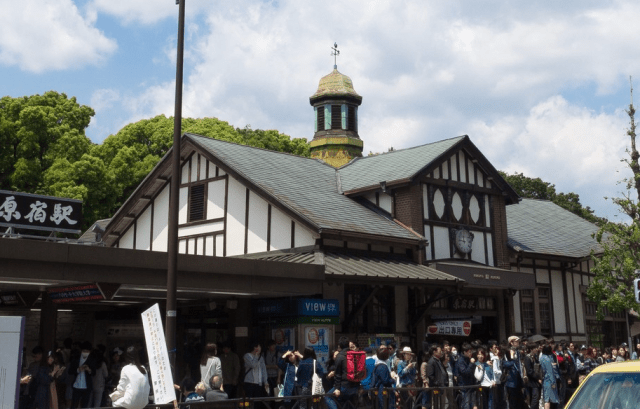
Farewell, Harajuku Station…and hello, Harajuku Station!
As a city that relies on rail to get around, there are a lot of train stations in downtown Tokyo. Harajuku Station, though, was one of the special ones.
After opening in 1924, Harajuku Station was able to survive both the firebombing of Tokyo during World War II and the relentless rebuilding that took place in the capital during the post-war period and boom years of the bubble economy. Despite the Harajuku neighborhood being the front line of new fashion developments in Japan, Harajuku Station eventually became the oldest wooden station in Tokyo.
However, that chapter in Harajuku history has come to a close. In the predawn hours of March 21, Harajuku Station, which lies along Japan Railways’ Yamanote Line, sent out its last trains before permanently closing, ending its 96 years of service to the community. A team of employees, in full dress uniform, lined up at the building’s entrance and called out “Thank you very much for these last 96 years” before bowing deeply and respectfully as the shutter came down for the last time.
Many Tokyoites, as well as a large number of travelers with fond memories of their visits to Harajuku, were sad to say goodbye, but the parting was unavoidable. Japan Railways initially announced plans to rebuild the station all the way back in the summer of 2016, and though there were calls from some to save the building, the structure no longer complies with Tokyo’s fire safety codes. There’s also the fact that the Harajuku neighborhood has changed greatly since Harajuku Station was built, with the district’s world-class apparel retailers, restaurants, and other attractions turning it into one of the busiest rail hubs in the city despite the building’s compact dimensions and severely limited entrance/exit capacity.
Of course, Harajuku still needs a train station, and so roughly three hours after the station closed its replacement, also called Harajuku Station, opened.
▼ The new Harajuku Station
The new station is located right next to its predecessor, and boats a number of improvements, starting with four times as much floor space. The new station has exits not only for the Omotesando and Takeshitadori shopping streets, but also a permanent exit to channel visitors towards Meiji Shrine (the former station’s Meiji Shrine exit was only open for a few days at the start of each new year), and the switch from a single-platform layout to a dual one should ease crowding as people wait for their trains. The new station also boasts a larger number of elevators and handicapped restroom stalls than the old building
▼ The pan-over from the old Harajuku Station to the new one can be seen at the eight-second mark in this video.
This actually isn’t the first time for Harajuku Station to be replaced, as the recently decommissioned building wasn’t the original Harajuku Station either. That distinction actually goes to the Harajuku Station that was built in 1906, then replaced with the second-generation station a year after the Great Kanto Earthquake devastated Tokyo in 1923. For those wanting to snap one last commemorative photo of Harajuku Station II, though, the building isn’t scheduled to be demolished until after the end of the 2020 Tokyo Summer Olympics, and Japan Railways says it hopes to rebuild a replica of the wooden building on the same spot incorporating materials frm the structure that do meet safety codes.
Source: NHK News Web
Top image: Pakutaso
Insert images: Pakuaso
● Want to hear about SoraNews24’s latest articles as soon as they’re published? Follow us on Facebook and Twitter!